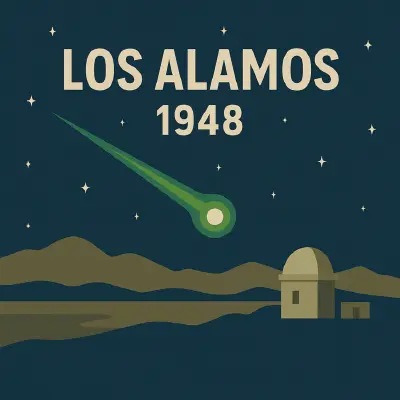Green fireballs are a type of unidentified flying object (UFO) first reported in late 1948, primarily in New Mexico. Early witnesses described them as a bright "green ball of fire" or like a large green meteor. A key concern for the U.S. government was their concentration around highly sensitive installations, particularly the Los Alamos and Sandia atomic-weapons laboratories, and other military sites. This led many, including military intelligence and astronomer Dr. Lincoln LaPaz, to suspect they could be Soviet spy devices or perhaps secret U.S. unconventional defensive devices.
Observations suggested these objects were atypical of natural meteors. Dr. LaPaz noted they lacked a train of sparks or a dust cloud. Reports included balls of fire descending at an angle and then leveling off into a horizontal flight path. Searches after potential flight paths found no meteor fragments or debris.
The U.S. government responded with investigations, including a February 1949 conference at Los Alamos which was unable to identify the origin. Project Twinkle was established for observation, but was discontinued, concluding officially that the phenomena were likely natural in origin.
Various explanations have been proposed. Mainstream views included natural bolides or meteors, though this was questioned by some. Some ufologists considered them of artificial, extraterrestrial origin. Scientists and technicians at Los Alamos reportedly theorized they were extraterrestrial probes from a hovering "spaceship". Other explanations included sequelae of atomic weapons tests or aircraft associated with secret military projects. UFO researcher Robert Hastings suggests trajectories align with nuclear fallout clouds from testing. More recently, physicist Dr. Stephen Hughes theorized a connection to ball lightning or electrified air, suggesting the green color is from ionized oxygen and erratic movements indicate an electrical nature, although acknowledging this explains one mystery with another.
Green fireballs continue to be reported in various locations globally. The historical concentration of these sightings near sensitive nuclear sites is part of a broader pattern of unexplained aerial phenomena reported near nuclear facilities since the atomic age.
